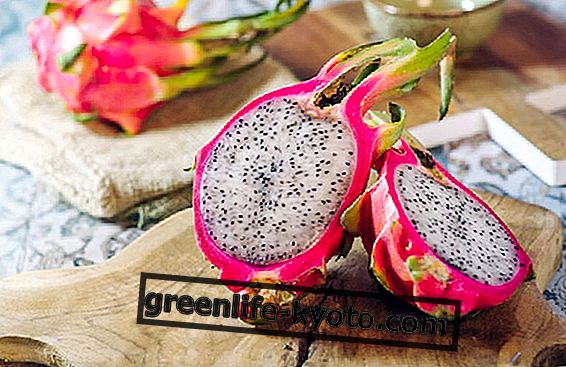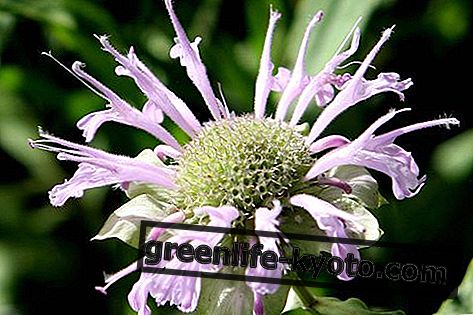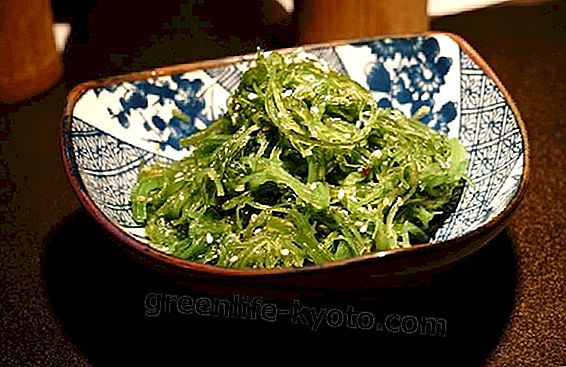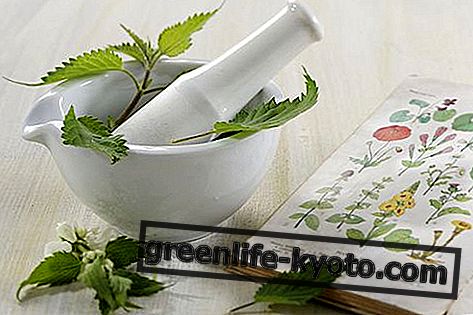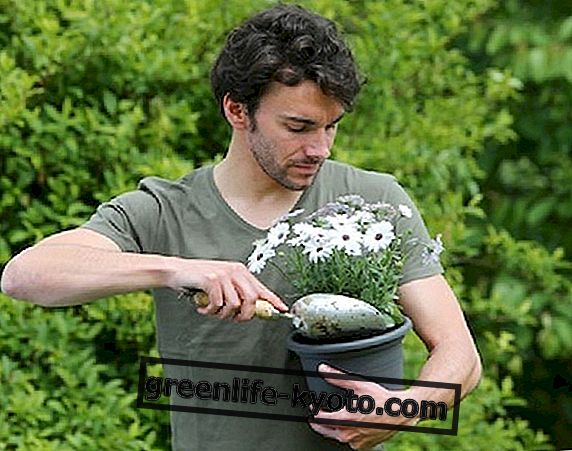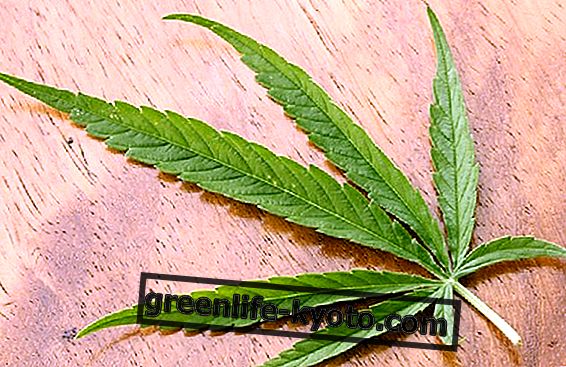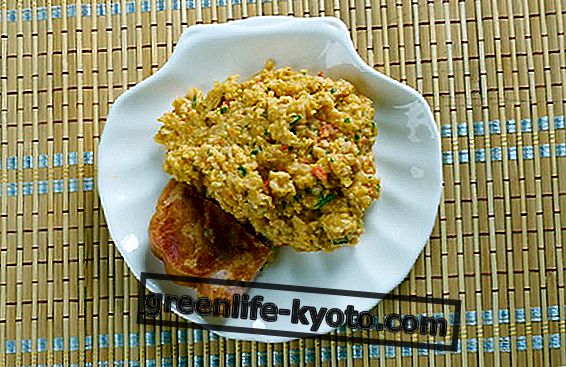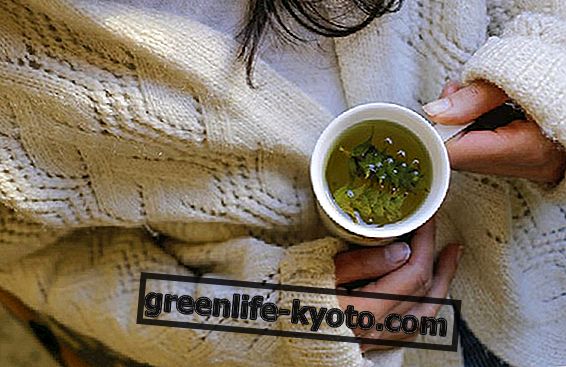
We know the types of apples that are mostly unknown, but once used in everyday cooking.
Cooking the apples: return to the knights' tables
In the Middle Ages, and even before, many extravagant foods were used in the kitchen that are currently forgotten: just think that serving chopped pears or turnips was interchangeable as an accompaniment to the dishes of the nobles and lords of the time.
The use of fruit was very common as an ingredient in savory recipes of both pasta dishes and side dishes, while in contemporary nutrition the place of fruit was reduced to just food to be eaten separately, perhaps at the end of the meal (moreover this involves some person digestion problems).
Among these foods there are the apples, which in botanical jargon are called false fruits since the real fruit is the core, and they are apples, pears, quince and loquats . These fruits were once used not only raw and fresh, but also cooked and transformed into tasty recipes.
Apples, harvest and variety
The apple harvest begins in summer, June-September and can continue for some varieties until the end of November. Some types are in fact precocious and use mainly for fresh consumption, such as San Giovanni, Gala, some Renette and Gravenstein. Then, with the succession of the collections, the apples have different storage (or preservation) characteristics. Some types of apples are very durable, which means that once harvested they can be kept well and stored for a long time without being ruined.
Once upon a time there used to be the melaio, that is a place in the cellar where the apples were stored, in a cool and dark place, for several months until the beginning of April. Among the late harvest apple varieties we mention the Anurca, the Durello, the Limoncina and the Gelata or Ghiacciata. The latter is one of the most conservable along with the Rotella (autumn ripening) and the Gamba Fina (summer ripening), both excellent also for cooking.
The quince
With a history also documented by Pliny the Elder and Cato, the cultivation of the quince dates back at least to the times of the Babylonian and Akkadian civilizations, and Plutarch reports that it was the goddess Aphrodite who imported it from the Levant. Its fruits are sometimes known as quince or quince pears but in reality the quince is a separate and well differentiated species that with the apple tree ( Malus domestica ) and with the pear tree ( Pyrus communis ) shares a place in the Pomoideae subfamily .
Between September and October the fruits are harvested, which depending on the variety can be maliform or pear-shaped, large, asymmetrical, golden yellow and covered by a thick down which disappears when incipient. The pulp is rich in sclereids (also called stony cells, with the function of support) and highly oxidizable, and although it is possible to eat the raw fruit, the taste is not very sweet and particularly astringete makes it indigestible to most.
Over the centuries, human beings have learned how to circumvent the organoleptic defects of the fruit to transform them into great virtues: by cooking the sugars express all their hidden sweetness, accompanied by unique honeyed aromas. The high percentage of pectin gives the fruit a great gelling power making it a perfect ingredient for jellies, mustards and jams and there is even a recipe for a gelatinous dessert that takes its name: the quince jelly .
The word "jam" itself derives from the Portuguese name of the plant: "marmelo". The plant also boasts some uses in traditional Indian, Afghan, Pakistani medicines, where dried fruits are used to fight coughs and throat problems, inflammation, allergies and ulcers, and where boiled seeds are used in case of pneumonia .

Cocomerina pear
Between four regions (Tuscany, Emilia, Marche and Umbria), between the Cesenate Apennines and the Tiber Valley, a unique fruit has been preserved. Of the origins of the " Pera Cocomerina ", or " Pera Briaca ", not much is known: from time immemorial it has been left to grow isolated and undisturbed along the fields and near the ditches and only in more modern times has cultivation been undertaken.
This small variety of pear (hardly exceeding 60 grams) owes its name to the characteristic color of the pulp, a rosy red that recalls watermelon or that gives the impression that the fruit has been soaked in wine.
The maturation can arrive in August or October and the fruit, sweet, fragrant and aromatic (remember the rowan), is not particularly conservable and loses its organoleptic qualities quickly; for this reason it is processed in a variety of products such as jams and syrups . Given the difficult availability and the scarce interest of the market, this fruit can be tasted mainly at the local festivals dedicated to it.

Pera Volpina
Another interesting variety of Pyrus communis responds to the name " Pera Volpina ". Also of unknown origin, it was found in the Umbrian valleys (Gubbio, Gualdo Tadino), used as a support for the rows of vines . The plant is particularly rustic, tall, long-lived, inconstant in fructifying (typical characteristic that removes the interest of the market).
The fruit is roundish, rust-colored, rough to the touch and particularly firm. This particular firmness means that the fruit can be consumed exclusively after cooking or processing . It is generally used to cook in wine together with chestnuts or chestnut honey and spices (cinnamon, cloves, laurel), or in the must as an ingredient of savor, a typical peasant dessert of the Romagna tradition.
In the past it was boiled in water or baked like a quince, or processed to make jams, caramelized fruits or juices . The juice, which preserves the tartness of the fruit (rich in vitamins and tannins ), seems to have also been used to protect the teeth and the beauty of the skin.

The medlar
For many many years now in our markets the only medlar we can find is the so-called "Japanese medlar" ( Eriobotrya japonica ) while the common medlar ( Mespilus germanica ) has practically disappeared from the fruit and vegetable circuits.
In fact it is not a fruit of simple "management": the plant is very rustic, particularly resistant to winter colds, but the irregular size, the low germination capacity from seed and the slowness with which it grows to reach fruiting make the tree does not lend itself to cultivation .
The fruit is harvested in autumn and needs a period of separation in the straw before it becomes edible: the high content of tannins makes it unsuitable for immediate consumption, making it acid and woody.
Once ready, the fruit has a sugary, aromatic flavor, reminiscent of nougat. This need to wait months for the enzymatic transformation of the fruit pulp is another factor that discourages the average consumer from taking an interest in this food.
Originally from the areas around the Caspian Sea and known several centuries before Christ, it was very important for the Romans since it is one of the very few fruits that can be eaten in the middle of winter (it was a real reserve of sugars, fibers and vitamins B and C before the arrival of the citrus fruits and much more adaptable than these to the continental climate and to considerable altitudes), with febrifugal, anti-inflammatory, antidiarrheal and diuretic properties .
It was indeed the Romans who took it with them in their conquests and made it fit in Germany, from where Linnaeus wrongly believed that the plant came from.

Baked apples and pears: a warm and beneficial snack
Even today, an excellent snack, even for the little ones, is the baked apple ! For this recipe, it is enough to choose a variety of apples or pears, which are firm and hard. An excellent variety is the Renetta or Baeburn. The procedure is very simple: just take the apples, wash them, place them on a baking sheet and leave them at 180 ° C. The cooking time, about 35 minutes, depends very much on the size of the apples and can be evaluated since they begin to shrink: at that point we can remove them from the oven, or the more we leave them the more they become soft.
It is advisable to pierce the skin, here and there, with a fork so that it cooks better and can let the excess water out. The taste is very pleasant and being a hot snack in the middle of winter is a good solution to regain heat! The powdered cinnamon sprinkled on top is a touch of excellence!

The benefits of cooked apples are many:
- they are a source of vitamins, minerals, fibers and phytonutrients especially phenols and flavonoids with antibacterial, antviral and antifungal action
- they are excellent antioxidants
- help intestinal transit
- lower inflammation
- facilitate diabetes prevention .
In short: a pleasant and healthy snack for everyone!
